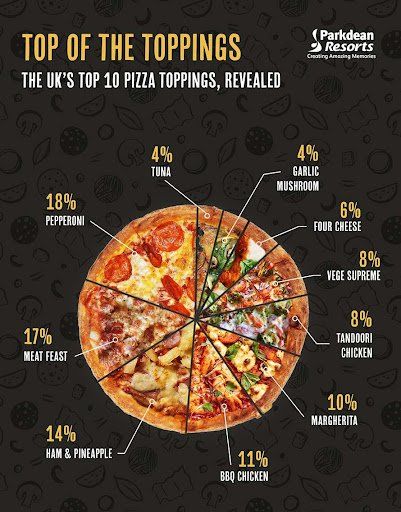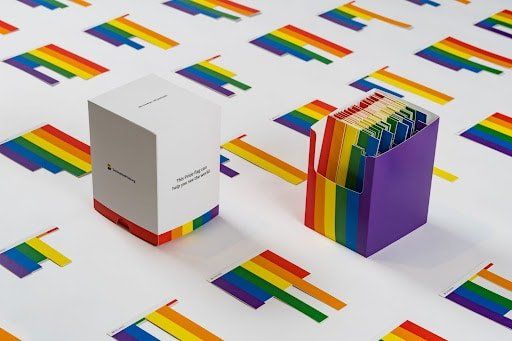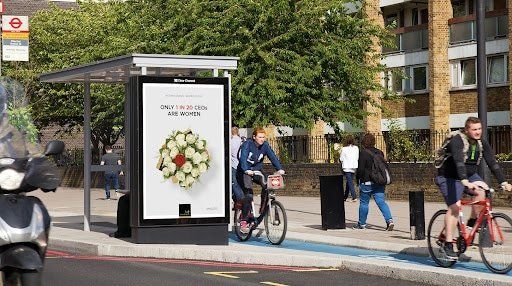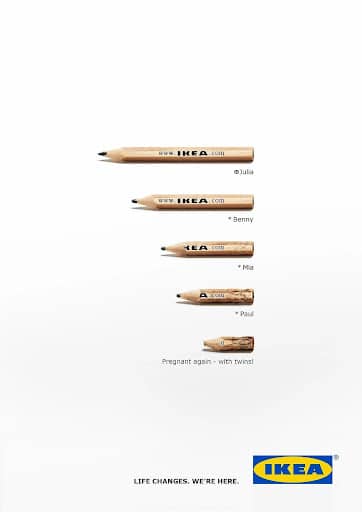Designing data differently: using product as the medium

By Amy Jones
5 min read
Tuesday, 15th February 2022
I’m never too busy to talk data vizzy.
(I already regret saying that.)
From heatmaps to histograms, charts to choropleths – we all know the standard approaches to data visualisation. All these executions are likely some of your design team’s go-to graphs, but when it comes to being creative with the way we display data, there’s opportunity everywhere.
It all boils down to the fact that in order to leverage data properly, it needs to be executed in an engaging and eye-catching way. And what better way, than using the actual stuff you’re talking about?
Data and design aren’t disciplines that exist in isolation. When done well, their crossover is one that in our industry often makes the most sense. As a result, we’ve now seen products used as the creative medium a fair few times, and it pretty much always works. To inspire you, here are some of my faves.
Sweet Data
In his self-initiated project ‘Sweet Data’, creative director Thomas Ollivier mapped out the colour split of his favourite sweets using the products themselves. Bright infographics show the uneven breakdown of the colour contents of Skittles, Smarties, and Chupa Chups.
When push comes to shove, they’re not much more than a nice group of visuals for a talk Ollivier did on data. But vitally, they show the potential of the medium itself to display numbers. Sure, you could’ve done a table or a pie chart, but where’s the fun in that?
It’s something to bear in mind when constructing data stories.

Food has also proved itself to make good data viz on more than one occasion too. Our design team served up something similar when visualising the nation’s favourite pizza toppings in a report for Parkdean Resorts last year. Try and think of a more apt way to display this data, I dare ya.

Destination Pride
I mentioned this campaign in a blog last month titled ‘Pride Month marketing: praise-worthy or performative?’ But the project is so bloody good, it’s worth mentioning twice.
Audiences crave content that holds value. It’s got to solve a problem they have, answer a question they’ve got or help them better navigate the world. With that in mind, Destination Pride is the pinnacle of data storytelling. It blends two worlds: hard data and communication design.
This tool turns the flag into a 6-bar chart as a way of displaying real-time metrics around LGBTQ+ laws and liberties. It indexes a series of vital metrics around factors such as marriage and adoption laws, blood donation and social media sentiment, for hundreds of cities all around the world.
We can all agree that the most valuable pieces of design are often the simplest – it’s the stuff that feels so blatantly obvious… yet isn’t. The way Destination Pride is visualised just makes so much sense. The positive ‘aha!’ feeling that we get from working it out in our heads later increases our ability to recall it. As such, it appears as an arresting piece of data visualisation that’s hard to forget.
Industry award jurors agreed too – it cleaned up at Cannes Lions, Clios and the D&AD Awards.

Interflora IWD Campaign
We’ve all seen stats around the gender pay gap, and in a world of regurgitated content, data storytelling helps you cut through your competitor’s content and stand out above the noise. So for Interflora’s International Women’s Day campaign this year, we at Rise at Seven displayed a series of shocking gender bias stats using what they know best – beautiful bouquets.
Taking on the #ChooseToChallenge theme, the style is stripped back and unburdened by any unnecessary visual bumpf so as not to detract from the message. Using a mix of white and red roses they show how women are overlooked and outnumbered, and this was rolled out across blog and social assets, OOH and magazine ads.
After my idea was there – using the colours in bouquets to display a range of 1 in X, or % statistics – the rest of the assets followed soon after.
Would it have made the same impact if we’d whipped up a pie chart? Of course not. It wouldn’t have made half the same splash.

Spotify Internal Data
You don’t have to overcomplicate it either.
It wouldn’t be a blog about data-driven marketing without mentioning legends of the game, Spotify. They’ve long leveraged internal insights in witty ways to tell the stories of its listeners in type-led ads – like the fact that somebody had streamed Justin Bieber’s “Sorry” 42 times on Valentine’s Day.
Short, sweet, and refusing to shy away from their stats. Easy.
It’s gone from strength to strength since its early uses. Sharing of Spotify Wrapped and Artist Wrapped data now dominates social media every December. It converts too: Wrapped was responsible for an app download increase of 21% in the first week of December 2020.

An opportunity for the IKEA pencil

Last up, this print ad shows how IKEA’s iconic pencil is with you, forever getting shorter, through all manner of life’s most important stages. It’s visualising sentiment, really, as opposed to any hard data… but with it you can see how their iconic brand symbol can translate pretty niftily into anything you’d represent with a bar chart.
So whilst they might not be the Daddy of Data Viz (yet), you can’t fault the Swedish furniture giants. They’re bloody brilliant at everything else they do. From reactive product PR and big billboards, to TV ads and pregnancy tests in the press, they know how to tap into emotion and humour. In case you missed it, I recently did a round-up of all the best IKEA advertising campaigns this summer on Twitter. Check it out and follow me whilst you’re at it.
@ IKEA if you’re reading, I love you.
_
The biggest lesson to take away from all this is that symbols and products give you an opportunity to lift your brand campaigns with something a bit more ownable and visually exciting. In a world of bar charts, be more of an International Womens’ Day bouquet.
TLDR: You owe it to good data to display it differently, especially if they’re numbers worth shouting about.
